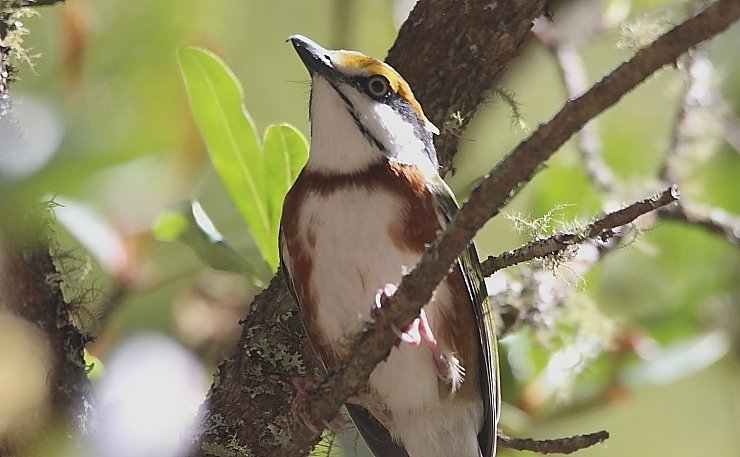
When I got back into birding about six years ago, I would not have predicted the personal bonds a birder can form with certain species. While all birds bring us joy, and we certainly want to see as many as we can, some species just seem more… special. They are especially beautiful, rare, or hard to find. Or, perhaps, they hold a special place in our personal birding story.
My long list of special species is, perhaps, no longer than that of other birders. Still, I consider myself fortunate to have seen several of my Very Special Birds on two outings this February.
I’ll start with two species that are especially hard to find. The Colima Warbler has a distinction shared with no other species in the world: It is fully migratory, but both its summer reproductive range and its winter range are almost entirely within Mexico. (A few breed in Texas’ Big Bend area.) All of our other migratory species either breed mostly in the U.S. and Canada, and winter in Mexico, or breed in Mexico, and winter in Central and South America.
To make it even more difficult to find, the Colima Warbler has a rather small total population, is drab, and is a skulker par excellence. So I was delighted to see one on February 8th, but was not at all surprised that the heavy brush gave me a truly dreadful set of photos:
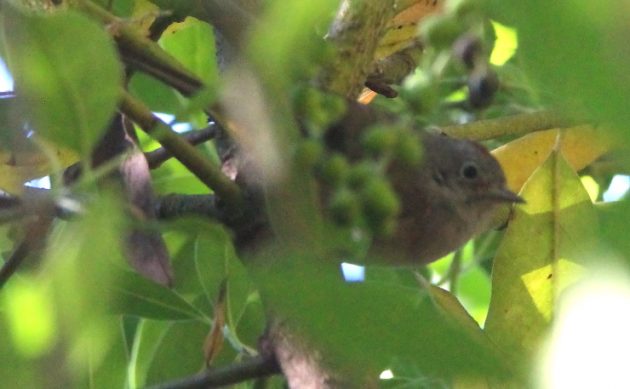
But, to my amazement, the story did not stop there! One week later, another Colima Warbler turned up at an entirely different site, and actually let itself by seen clearly. Behold, my very first good photo of a Colima Warbler!
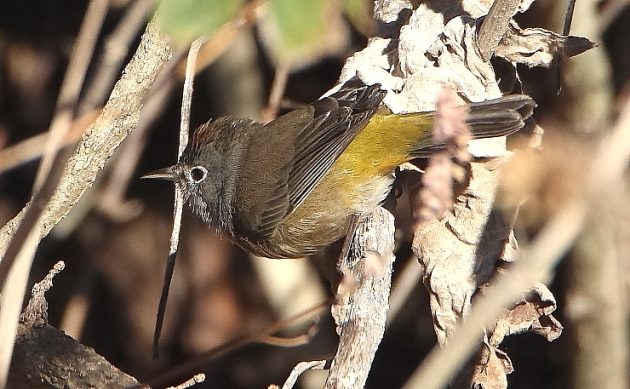
The second species that I saw, and which is quite a difficult find in most places, is the Chestnut-sided Shrike-Vireo. When I first saw this large vireo, I immediately became the envy of most of my Mexican birding buddies. And yet, my sighting this month was by now my 41st encounter with it (although some only involved hearing its very distinctive call). The Chestnut-sided Shrike-Vireo is also a singularly beautiful bird, and this one gave me some good photos. So, lucky me!
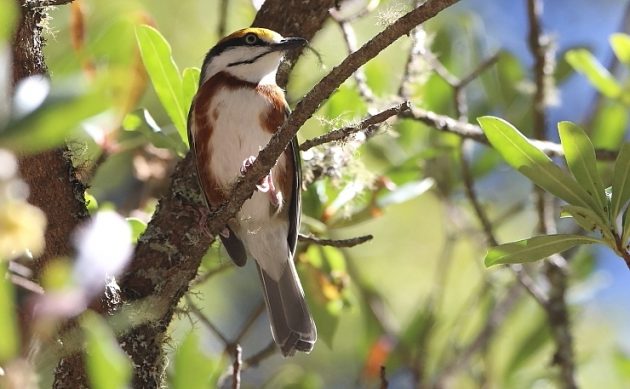
The Transvolcanic Jay, once considered a subspecies of what was known as the Mexican Jay, only occurs in an east-west strip of central Mexico (the Transvolcanic Axis, as it is known here). In appearance it reminds me of the California Scrub-Jays of my childhood. But those birds often appeared singly or in pairs in our suburban garden, while Transvolcanic Jays can only be found in unpopulated pine-oak forests, where they fly in groups of a half-dozen or more. far up among the crowns of the tallest trees. So I was delighted when a group flew into the lower reaches of the oak forest where I was standing, allowing me to take some pictures of one member of their raucous group:
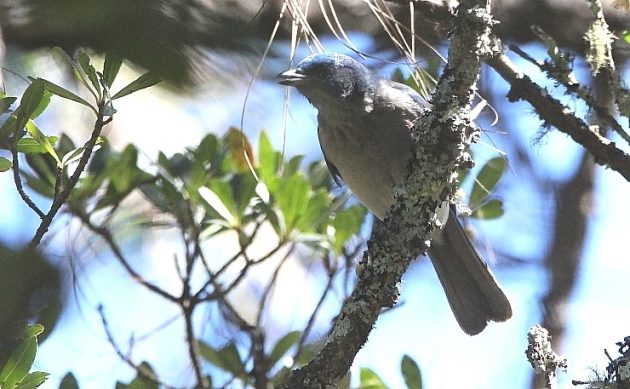
The next pair of species are special because they allowed me to make real discoveries (something that would be highly unlikely in the U.S., where so many ornithologists and birders have already gone ahead of us). For example, Rose-breasted Grosbeaks are not officially supposed to spend time in the highlands of central Mexico. But, over the past three years, I have seen quite a few of them in different sites of these highlands. Since I had always seen them in March and April, I believed this represented a new migratory route. But on February 8th, I saw several Rose-breasted Grosbeaks feeding in a group at an elevation above Morelia’s. Since this date is too early for this species’ migration, I now suspect we are dealing with a wintering population in the highlands.
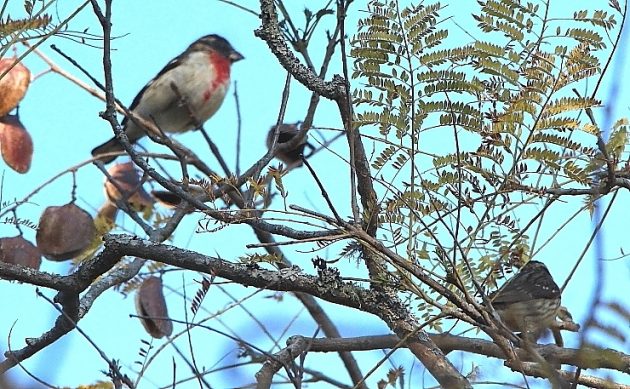
Just a week later, I had a similar experience with an Olive-sided Flycatcher. This species mostly winters in South America, but migrates through all of Mexico, and a small population winters on Mexico’s west coast. I have seen an Olive-sided Flycatcher or two in my area most years, but always in September/October or March/April, which is consistent with their being transients. But the Olive-sided Flycatcher I saw on the 15th of this month is almost surely wintering in my area. (Ditto for the one I saw elsewhere on the 22nd.)
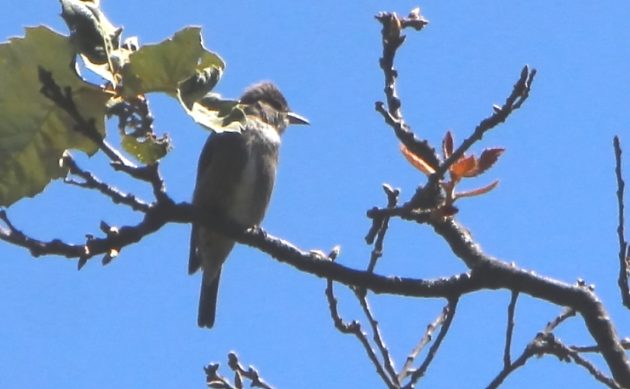
Then there are the birds that don’t need rarity or a backstory to be special; they rely on attitude alone. Slate-throated Redstarts are called “Pavitos” (little turkeys) here in Mexico, because of their habit of spreading their tails turkey-style. This one pivoted and flared its tail, between the first and second photos shown here, in less than a second. I could actually hear a “crack!” when his tail feathers spread. Then it slowly rotated, with its tail still spread; the third shot is one of several I took as he rotated. I’m not sure, but we may now be engaged to be married.
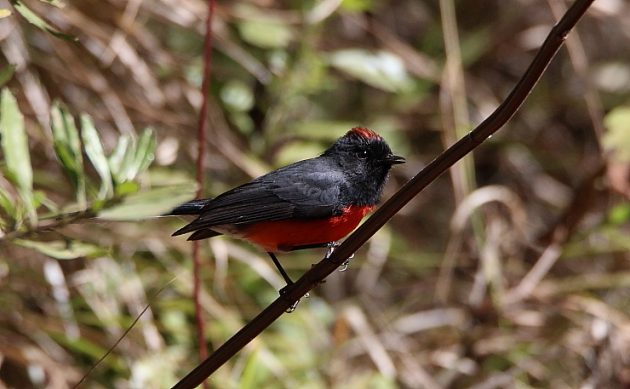
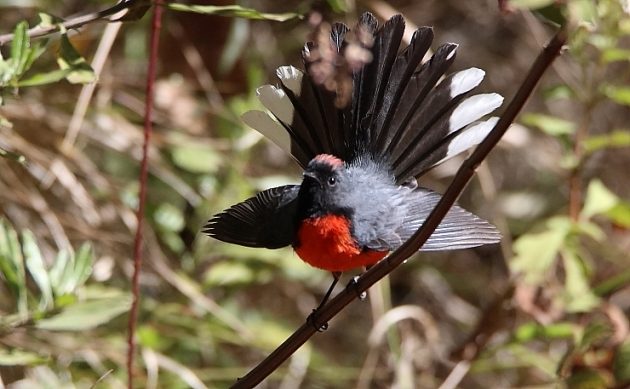
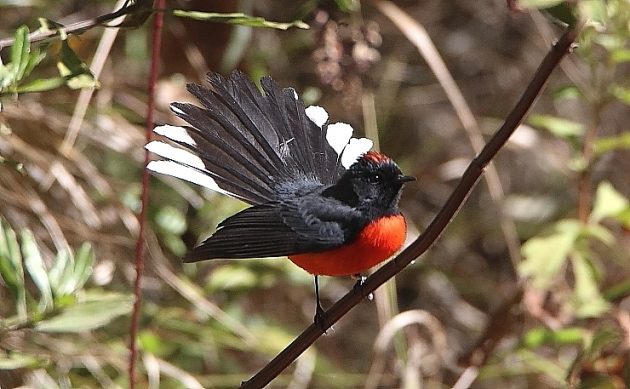
My photo, from the same site, of the Slate-throated Redstart’s close relative, a Painted Redstart, is not quite as good. But I can’t help myself. I am a sucker for upside-down birds.
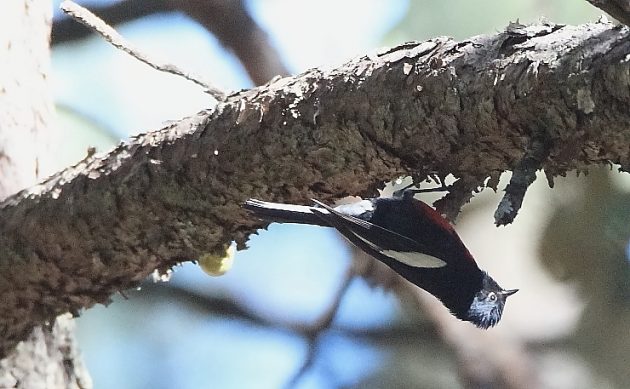
Speaking of attitude, I’ll leave you with this photo of a Tufted Flycatcher, from the 8th of February. See if you can resist his stare.
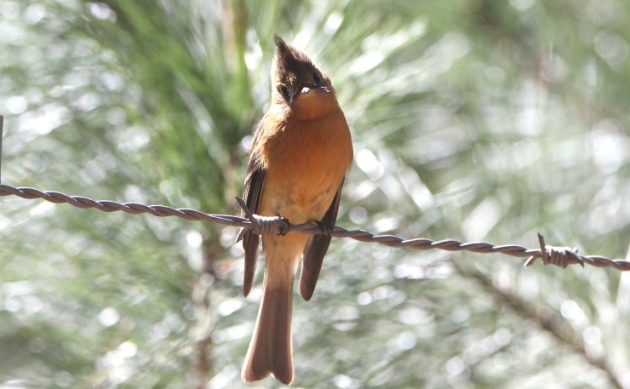













Leave a Comment